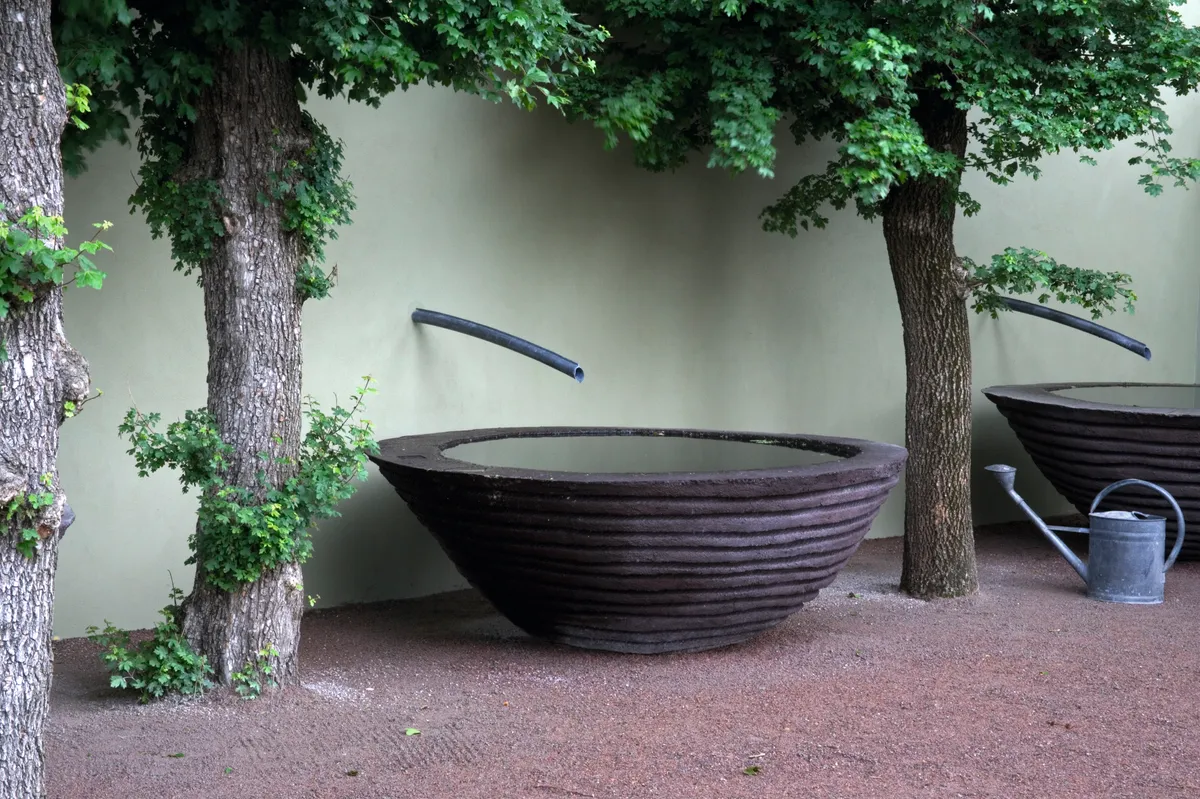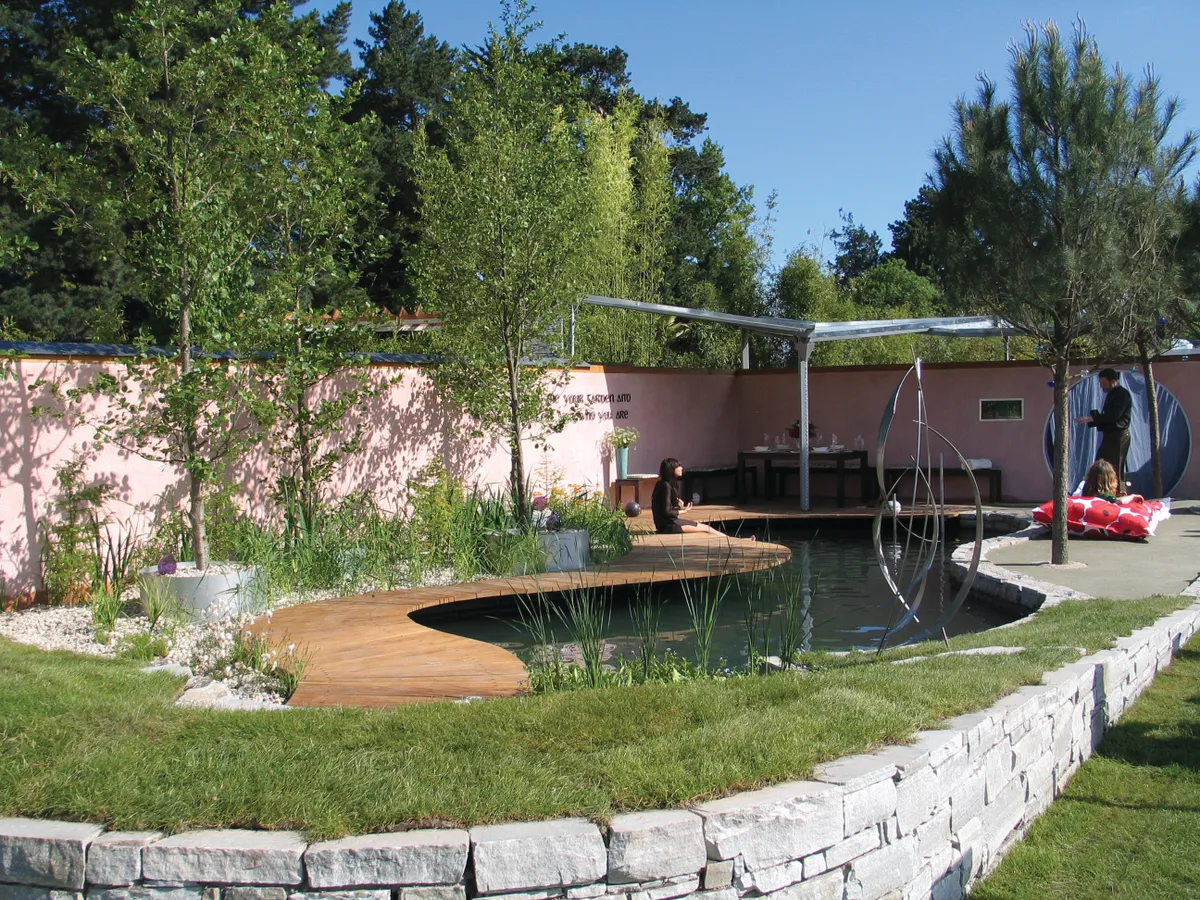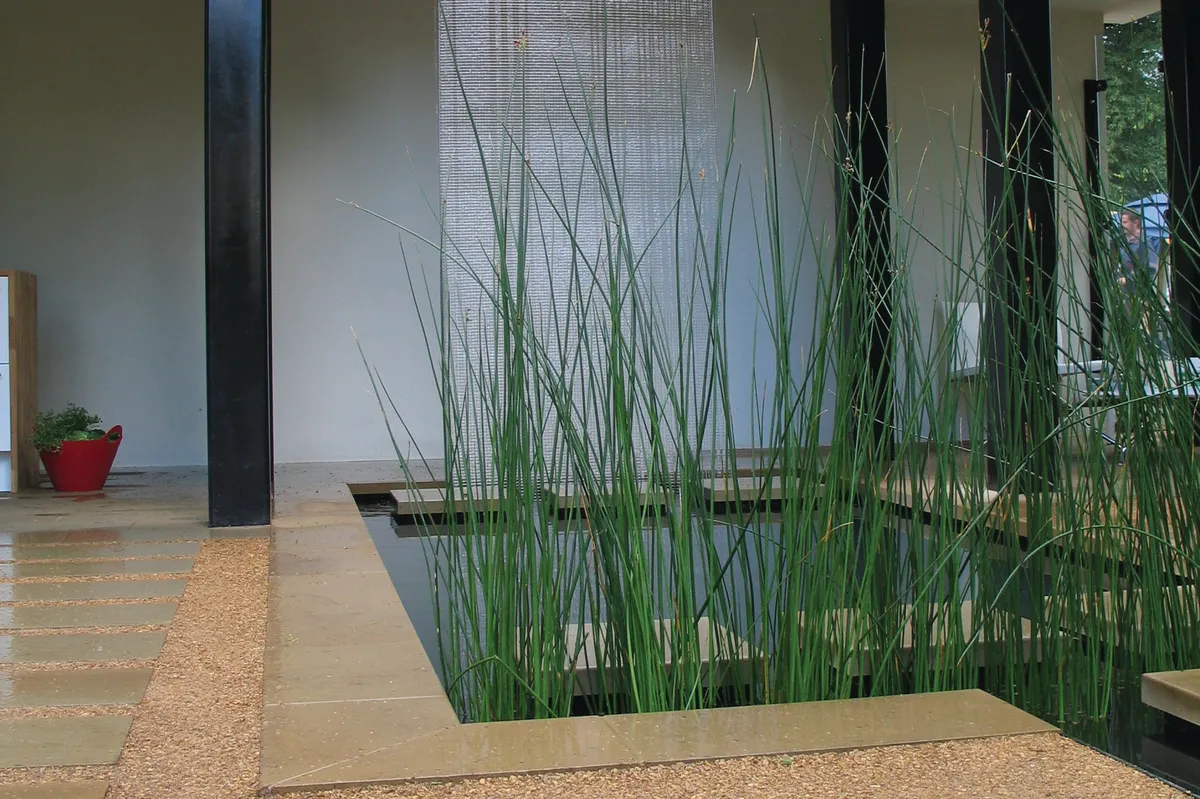As concerns over the impact of climate change become increasingly mainstream, garden owners face considerable questions over resources and their management. Britain and its high rainfall has long been something of a joke for overseas visitors but the last decade has seen considerable variations and dramatic depletion in our reservoirs and aquifers. In the UK, water as a resource can no longer be taken for granted and measures to save, retain and recycle water should be on every gardener’s agenda. Part of the issue with the scarcity of water is the increase in demand. The harvesting of this resource not only reduces demand but also takes pressure off drainage and storm water systems, reducing the risk of flooding.
Here's more on hosepipe bans in the UK.
Water saving ideas for the garden
Water butts

The water butt is a traditional method of collecting run-off water from the roof of the greenhouse or shed, useful for smaller scale or ad hoc watering needs but insufficient for the garden as a whole. Traditionally these would have been timber barrels, lead or zinc containers, the latter often richly decorative features.
These modest but useful reservoirs have been replaced by functional plastic (polyethylene) butts, contributing much less to the garden aesthetic but storing water more efficiently, often fitted with convenient taps to access the water. Typically they can store between 200 and 600 litres of water although it is possible to reach a capacity of more than 2,000 litres if space allows. The tanks are fine for the working garden but not suitable features in the ornamental garden, although it is possible to box them in with timber.
Don't miss our guide to the best water butts.
Underground water tanks

On a larger scale it is possible to install an underground water tank which can take all or part of the rainwater run-off from a roof or from paved areas.
Underground water tanks can be quite sizeable and need to be sited with care, for several reasons. Proximity to the house can affect foundations, and placing a tank near a neighbouring property might require a party wall agreement. In turn, the downward pressure of walls and foundations can pose a threat to storage tanks. For these reasons one needs to consider how to gain access to the reservoir once installed, which requires at least putting an inspection cover on the surface. There’s also the question of how to extract water from it; a submersible pump is one solution.
The investment necessary for the tank, connections and excavation makes the financial benefits of such a venture only sensible over the long term. It is the moral issue of resource management that is more likely to prove decisive. The spoil from the excavation also needs some consideration – distribution within the garden being a much more positive application if space allows than removal to a land-fill site. It is important to note that excavated material increases in bulk by approximately one third, increasing transportation needs and costs. The size of the tank depends on the area of roof or paving to be drained and the average rainfall figures. Tanks can be fitted with filters for the incoming water to reduce potential blockages and sediment.
Reusing ‘grey water’

Water can also be put to use in other ways in the garden. So-called grey water provides a suitable source. This is waste water from any household source excluding the toilet. In some cases, heavily contaminated waste water – from a washing machine or dishwasher, for example – may also be excluded.
A harvesting system will collect and store this water, ready for re-use as non-drinking water – ideal for garden irrigation. The stored water is filtered and cleaned. One option is to use physical filters such as sand beds and grease traps. In larger schemes, there is the option of biological filtration. This can involve the use of chemicals to prevent the growth of harmful bacteria. Again, installation can be expensive, and the cost would only be redeemed over the long term.
Reed beds

The most interesting method of filtration for the garden owner is the reed bed, as this creates a feature in itself as well as a ready source of water. The reed bed must cover at least one square metre for every person in the house and is basically an excavated and waterproofed pit about 60- 75cm deep, back filled with layers of loose stone, gravel or pea shingle and sand. The top layer is usually fine, washed sand into which the reeds are planted – normally or , at densities of about four per square metre. It is possible to introduce additional supporting planting for decorative effect and to create a more varied wildlife habitat – it is the reeds, however, that do all the hard work when it comes to cleaning the water. With the help of bacteria, the system removes harmful chemicals and pollutants which can build up over time if grey water is used directly on the garden. The process will clean grey water for general garden use and storage, so the system needs a link to a tank.
Between 30 and 50 per cent of the water used in a typical house can be saved for re-use in this way, a statistic worth considering as demands on this precious resource continue to rise.
Key water saving points for your garden
- Whether you choose to filter grey water or store rainwater from the roof or other hard surfaces, look carefully at the costs of installation and also of continued running. Most systems use energy in some way, for pumps or filters, and this can sometimes outweigh the environmental benefits.
- Storage tanks should not be installed within 5m of a house or other property, which can rule out these systems from smaller gardens.
- Some filtration systems for grey water can be installed in a garage or shed, as long as water connections to the house are both possible and unobtrusive. This removes them from the garden, but you’ll have to provide space to store the cleaned water too.
- Try to incorporate reed beds into the wider garden rather than treating them as a stand-alone feature – use consistent materials to define edges and surrounds.
- Even without rainwater harvesting, the retention of lawned or planted surfaces and the introduction of permeable paving that allows water to penetrate should be considered. The latter can also be linked to water storage.
- Basic filtration of water can start at the source; netted covers for downpipes and gutters will prevent leaves and twigs from entering the water storage system.